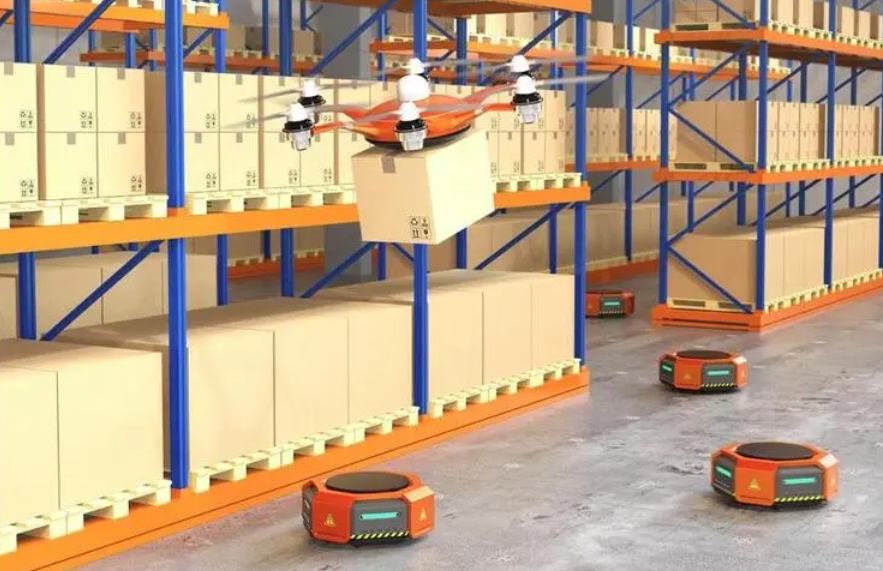As we move further into 2025, warehouse management continues to evolve at a rapid pace, driven by technological advancements, shifting consumer demands, and the need for increased efficiency. These changes are reshaping how warehouses operate and are bringing new challenges and opportunities for warehouse owners. In this article, we will explore the major trends influencing warehouse management in 2025 and offer actionable insights into what warehouse owners can do to stay ahead of the curve.

The push for automation and robotics in warehouse management is stronger than ever. As e-commerce continues to grow and customer expectations for faster delivery increase, warehouses are turning to automated systems to streamline operations. Automated Guided Vehicles (AGVs), robots for picking and packing, and automated storage and retrieval systems (ASRS) are becoming common sights in modern warehouses.
What Warehouse Owners Can Do: To stay competitive, warehouse owners must begin integrating automation into their operations. This doesn’t mean replacing human workers, but rather augmenting them with technology that improves efficiency and reduces errors. Investing in automated systems will result in quicker order fulfillment and better management of inventory. As a first step, evaluate current workflows to identify processes that can be automated for better throughput.
Artificial Intelligence (AI) is revolutionizing warehouse management by enhancing predictive analytics, demand forecasting, and inventory management. AI-powered systems can analyze historical data to predict future demand, allowing warehouses to optimize inventory levels and reduce stockouts or overstocking.
What Warehouse Owners Can Do: Warehouse owners should invest in AI-powered Warehouse Management Systems (WMS ) to optimize operations. By leveraging AI, warehouses can streamline the supply chain, enhance forecasting accuracy, and improve labor management. Additionally, AI can help reduce operational costs by predicting the best times to reorder products or adjust inventory based on real-time data.
Sustainability is no longer just a buzzword; it’s becoming a central aspect of warehouse operations. With increasing pressure from both consumers and governments, warehouse owners are being pushed to adopt greener practices. From energy-efficient lighting to solar-powered facilities and electric delivery fleets, green warehousing is gaining momentum.
What Warehouse Owners Can Do: Warehouse owners should prioritize sustainability in their operations. This can include using energy-efficient equipment, installing solar panels on warehouse rooftops, and adopting green packaging solutions. Moreover, warehouses should consider reducing waste and optimizing their supply chain to minimize their carbon footprint. Integrating sustainability into your warehouse management strategy will not only help reduce operating costs but also attract environmentally conscious consumers.
The Internet of Things (IoT) is transforming warehouses by enabling real-time tracking of inventory, equipment, and shipments. IoT devices such as RFID tags, smart sensors, and GPS trackers allow warehouse managers to monitor inventory levels, track the condition of goods, and ensure optimal storage conditions.
What Warehouse Owners Can Do: Investing in IoT technologies is crucial for warehouse owners who want to improve visibility and control over their operations. Integrating IoT into warehouse management systems will provide real-time insights into inventory movements, improve accuracy, and reduce the risk of lost or damaged goods. For example, using smart sensors to monitor the temperature of perishable goods can help prevent spoilage, ensuring better quality control.
As consumers demand faster and more flexible delivery options, warehouses are increasingly tasked with handling omnichannel fulfillment. This involves managing orders from multiple sales channels such as e-commerce websites, physical stores, and even third-party retailers. As a result, warehouses must be more agile and responsive to meet customer expectations.
What Warehouse Owners Can Do: To excel in omni-channel fulfillment, warehouse owners must optimize their systems to handle orders from various channels seamlessly. This means integrating e-commerce platforms with warehouse management systems to enable faster order processing and real-time stock updates. Additionally, warehouse layouts may need to be redesigned to support both bulk orders for retail and smaller, more frequent e-commerce shipments.
Cloud-based warehouse management systems (WMS) are revolutionizing how warehouses handle operations. Cloud technology offers greater flexibility, scalability, and accessibility, allowing warehouse owners to manage their operations from anywhere in the world. Cloud-based solutions also provide real-time updates, which is critical for fast-paced environments.
What Warehouse Owners Can Do: Switching to a cloud-based WMS can provide significant advantages in terms of accessibility and scalability. It allows warehouse managers to monitor operations from multiple locations, track performance metrics, and make adjustments on the fly. Furthermore, cloud solutions are more cost-effective than traditional on-premise software, as they eliminate the need for heavy upfront investment in hardware and maintenance.
The trends shaping warehouse management in 2025 reflect a broader shift toward greater efficiency, sustainability, and technological integration. Warehouse owners who embrace these changes and invest in the right technologies will be well-positioned to thrive in an increasingly competitive market. By adopting automation, AI, IoT, and cloud solutions, and committing to sustainability, warehouse owners can improve their operational efficiency, reduce costs, and meet the growing demands of consumers. The future of warehousing is bright, and those who take the initiative to innovate will be the leaders of tomorrow’s supply chain.
By staying ahead of these trends, warehouse owners can position themselves for long-term success and navigate the challenges of a rapidly changing industry.

Last updated: 2025-05-06

Last updated: 2025-04-01

Last updated: 2025-03-03

Last updated: 2025-02-05